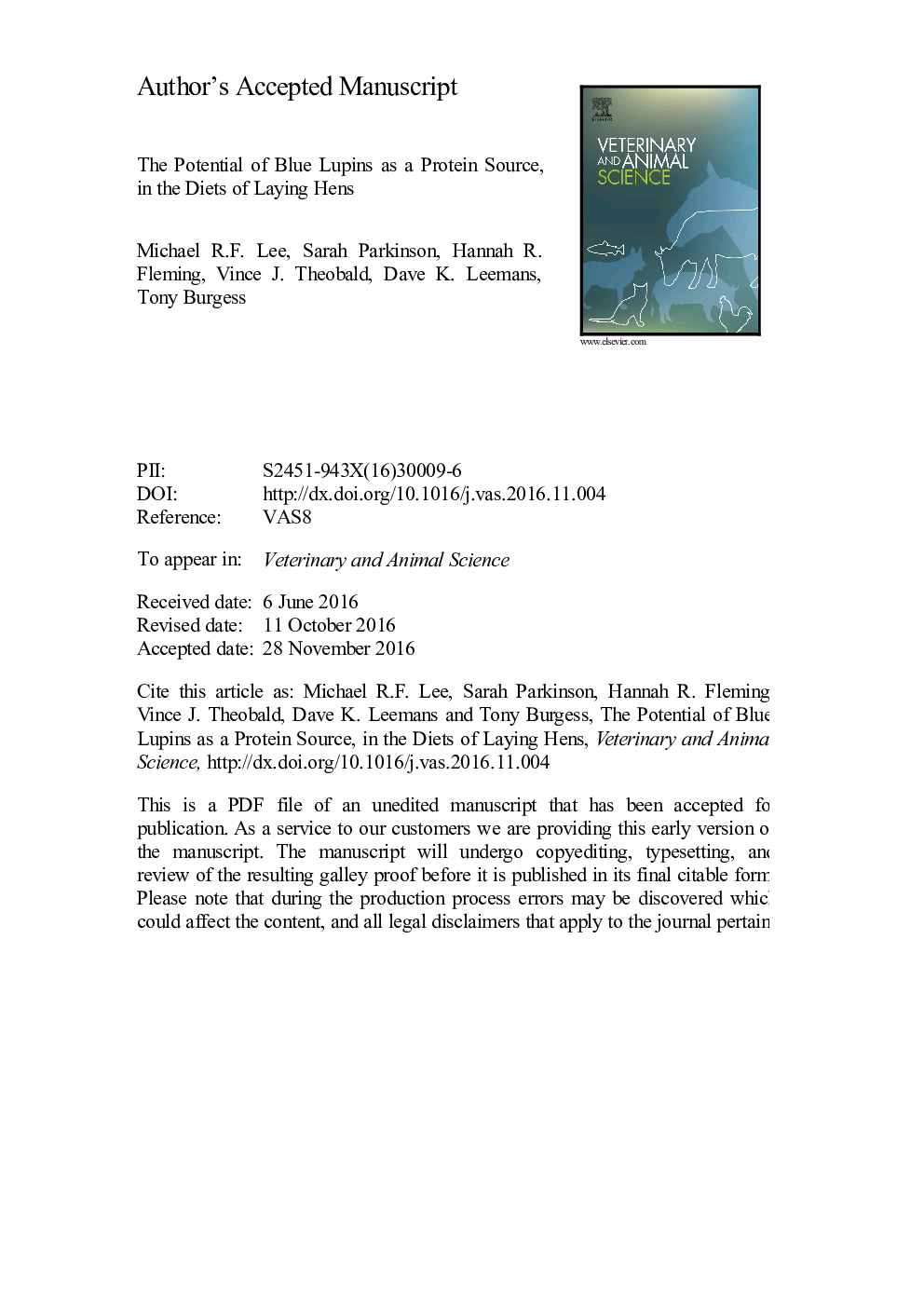| Article ID | Journal | Published Year | Pages | File Type |
|---|---|---|---|---|
| 5537540 | Veterinary and Animal Science | 2016 | 27 Pages |
Abstract
Layers diets typically contain 15-20% soya due to its high crude protein content (ca. 36%). Reliance on soya for protein can result in large increases in cost of feed due to the law of supply and demand as a global commodity. Lupin grains have high protein content (35-40%) but previous experience with white lupins has shown toxic effects in poultry due to high levels alkaloids and poor performance due to anti-nutritional Non-starch polysaccharides (NSP). Here blue lupins either processed or whole were trialled for their potential as a protein source. Point of lay chickens (64) at 16 weeks of age were weighed and allocated to 16 coops of four hens. Coops, as the experimental unit, were randomly allocated to four treatments: layers mash with soya (Control); or layers mash with 150Â g of lupin/kg diet with the lupin either: whole (Whole); dehulled (Dehulled) or dehulled + a solid state fermentation enzyme extract (SSF; 150Â g/tonne DM). All diets were ground and formulated to be balanced for energy, crude protein and essential amino acids using NIRS. No difference in growth rate, final hen weight, DM and water intake, eggs per day, mean egg weight, yellowness of yolk or chroma was found between treatments. There was a trend (P<0.1) for the SSF treatment to produce less heavy shells and a significant effect for the lupin treatments to have redder yolks (P<0.001). Fecal DM and bacterial counts were not different and there was no sign of enteritis or intestinal tissue hyperplasia from hen autopsies. Inclusion of blue lupins in the diet of laying hens at a rate of 150Â g/kg DM resulted in no adverse effects in production or hen health and could be used as part of a balanced ration with inclusion of NSP degrading enzymes to reduce reliance on soya protein.
Related Topics
Life Sciences
Agricultural and Biological Sciences
Animal Science and Zoology
Authors
Michael R.F. Lee, Sarah Parkinson, Hannah R. Fleming, Vince J. Theobald, Dave K. Leemans, Tony Burgess,
